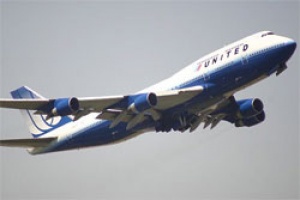United Airlines operates “Green Corridor” demonstration flight

United Airlines will become the first airline to conduct two trans-Atlantic flights using state-of-the-art flight planning to reduce environmental impact and save fuel. The flights, which will be flown on 5 June 2010 – World Environment Day, as designated by the United Nations – will save nearly 6,400 pounds of fuel and will reduce carbon dioxide emissions by nearly 20,000 pounds.
United will use a flight planning system to compute optimum routing, altitudes and speeds based on winds and aircraft performance capabilities and is partnering with NAV Canada, Canada’s civil air navigation service, and NATS, the UK’s leading provider of air traffic control services. United is conducting the flights as part of several efforts aimed at advancing technological and process improvements that will contribute to environmental sustainability and increased fuel savings.
“We are focused on effecting a permanent change in flight planning and routing over the North Atlantic to achieve significant environmental impact improvements,” said Joseph Kolshak, United Airlines senior vice president of operations. “We expect this effort will serve as a model for how cooperation and coordination can generate meaningful progress in our drive to protect the environment and improve our operational efficiency.”
United will also use external power and air conditioning at the gates to limit the use of the aircraft’s auxiliary power unit (AAPU) and will coordinate with O’Hare ground control to minimize taxi time to the runway thereby reducing taxi fuel burn.
United will utilize Automatic Dependent Surveillance – Broadcast (ADS-B) technology and new procedures based on the Future Air Navigation System (FANS) and a variable Mach cruise approach will be the largest component of the test. Overall, the effort will study the environmental benefits, the costs of leveraging planned technological enhancements, applying aircraft separation procedures and surveillance standards in the busiest corridor of airspace across the North Atlantic. This airspace combines a flexible transition corridor from continental Europe aligned with the oceanic airspace over southern Greenland and the East coast of Canada.
ADVERTISEMENT

